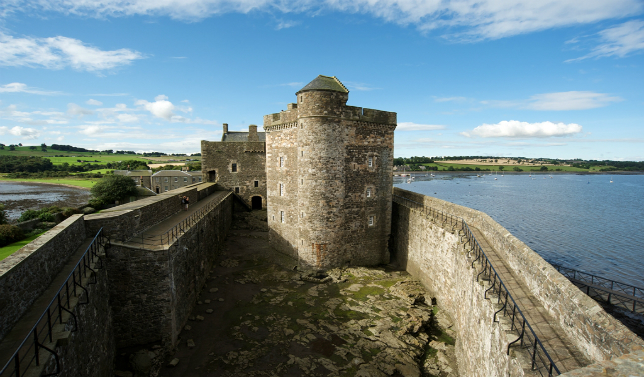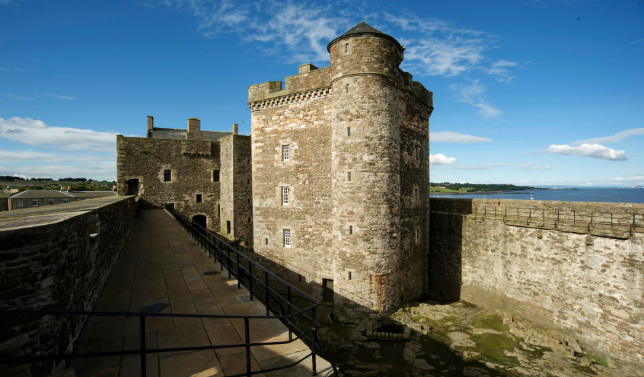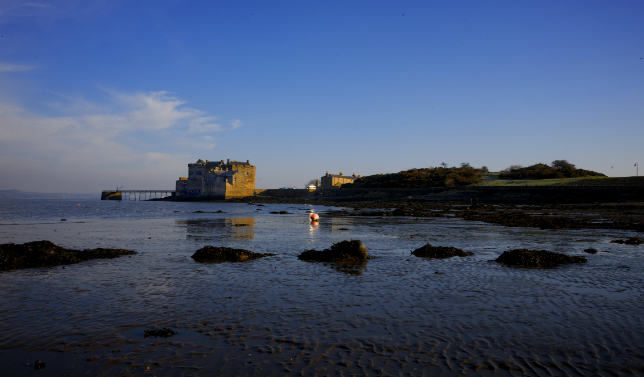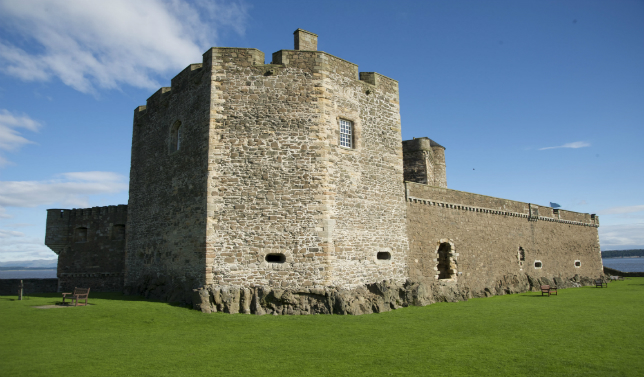- Search
- My Favourites
Step into a largely intact medieval castle whose defences once guarded the Firth of Forth. An impressive venue used as infamous Fort William in Outlander.
Opening times
1 Oct to 31 Mar:
Daily, 10am to 4pm (last entry 3.15pm)
- Overview
- Key info
- Getting There & Access Guide
- Free Onsite Parking
- Children Welcome
- Pet Friendly
- On Public Transport Route
- Bike Storage Available
- Only Cash or Debit/Credit Card
- Filming Location
Blackness Castle was built as a residence for the powerful Crichton family, but this auspicious start soon gave way to a chequered history.
Seized by James II, it remained in Crown ownership, initially as a garrison fortress and state prison.
It has undergone many alterations, but it could not withstand the onslaught of Cromwell’s artillery in 1651.
Redeveloped in 17th century, it remained an important military base until the 1870s when it became a munitions depot.
It fell from military use in 1912 and, despite a heavy-handed restoration in the 1920s, retains much of its rugged charm.
The Castle was used in the internationally loved Outlander series. One of the most brutal scenes takes place here; when evil Jack Black flogs main character Jamie.
Find out more about our group offers here
Address
Blackness Castle
Blackness
By Linlithgow
EH497NH
Tickets offers
- Adults £6.00
- Children £3.60
- Concessions £4.80
Prices and opening times
| Category | Admission price |
| Adult (16-64yrs) | £7.50 |
| Concession (65yrs+ and unemployed) | £6.00 |
| Child (5-15yrs) | £4.50 |
| Family (1 adult, 2 children) | £15.00 |
| Family (2 adults, 2 children) | £21.50 |
| Family (2 adults, 3 children) | £25.50 |
Children under the age of 16 must be accompanied by an adult.
Concession price: this applies if you can show proof that you’re aged 65+ or unemployed.
Admission prices are subject to change.
1 Oct to 31 Mar:
Daily, 10am to 4pm (last entry 3.15pm)
We recommend booking in advance to guarantee entry.
Closed Christmas Day and Boxing Day.
4m NE of Linlithgow on the Firth of Forth, off the A904
From Linlithgow train station walk 5 mins to Linlithgow Cross on the High Street, First Bus number 49 to Blackness. Walk 6 minutes to castle.
Getting Around:
If you're planning on visiting Linlithgow Palace, Torphichen Preceptory and Blackness Castle, then buy your PLUSBUS ticket at only £2.30 for one day of unlimited travel, it is definitely worth while
Site contact number
01506 834 807
Parking
The car park is about 10m from thevisitor centre. It has a rough gravel surface and no accessible spaces marked.
Approach to site
The main castle building is about 30m along a level gravel roadway and about 10m down a fairly steep, uneven path.
Visitor centre
Enter the shop via three concrete steps with a wooden handrail on both sides.
Monument
The entrance to the site has a gently sloping concrete plinth with a single handrail before stepping down to uneven natural rock at the entrance.
The ground level of the castle is mostly uneven rock or cobbles, and is slippery when wet. The pier is of planked wood coated with an anti-slip surface.
The south (stern) tower is reached over a rough cut rock stair and a stone spiral staircase of 51 steps. The east courtyard parapet (wall walk) is reached along the west spur, up a series of stone staircases or through the great hall, via a spiral staircase with no handrail.
The roof of the north (fore) tower is reached up 40 stone steps to the spur battery then along the battlements and up a further two sets (1 wood, 1 stone) of 7 steps.
The first floor is reached up a further 16 timber steps with a handrail on the left hand side. The mid tower is reached through a spring mounted wooden door.
The upper levels are reached via wide and even stone spiral stairs with no handrails. There are four picnic tables and two benches on the lawn in front of the castle.
Surroundings
There is a large grassed area around the castle.
Toilets
The nearest adapted toilets are at
Tesco, Link Road, Bo Ness EH51 9AN;
3.4 miles.
More like this
Addiewell History
With this fantastic site, you can find out all you want to know about the booming shale industry within the small mining town of Addiewell.
Bathgate History Trail
This trail takes in 20 attractions all over Scotland connected to Mary Queen of Scots, the most famous and intriguing member of the Scottish monarchs.
Cairnpapple Hill
Stand on a once sacred hilltop where people first held rituals and raised monuments 6000 years ago.
Visit West Lothian, Civic Centre, Howden South Road, Livingston, West Lothian. EH54 6FF UK Registration No. SC346843
Great for








